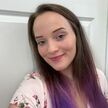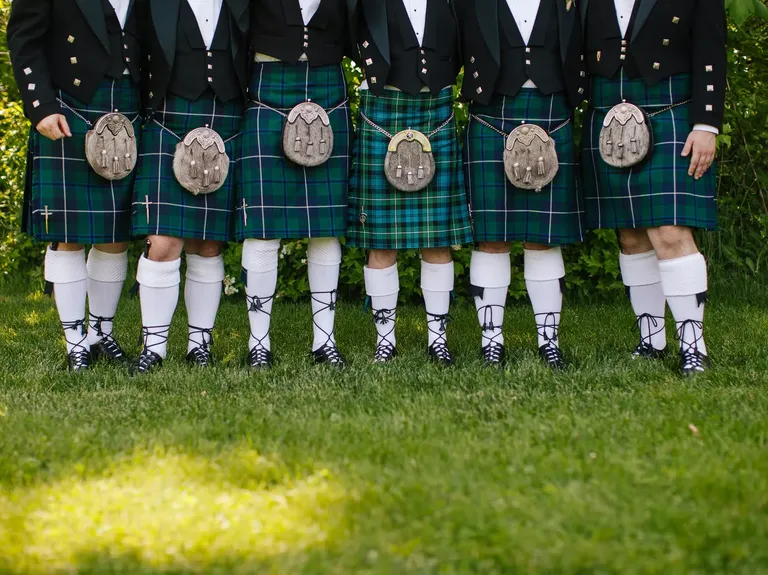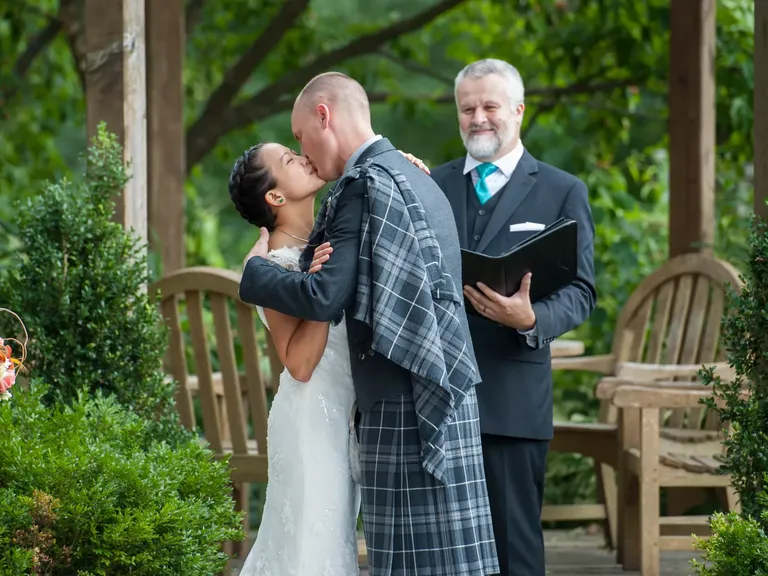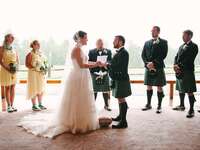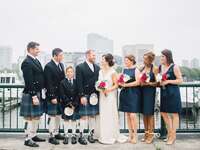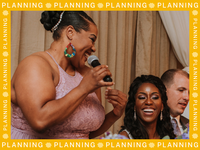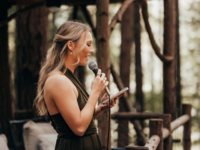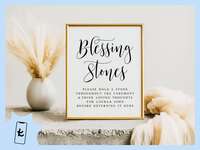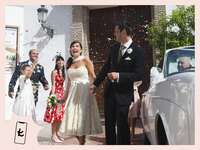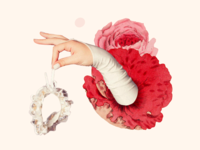13 Meaningful Scottish Wedding Traditions for Your Big Day
If you or your partner have Scottish roots, you may be looking to honor and celebrate that within your wedding activities. We know it can be overwhelming if you're not as familiar with what those may look like which is why we're here to help. From bringing bagpipe players to help you make your big entrance into your reception to wearing a kilt, there are several manners in which you can incorporate Scottish wedding traditions into your wedding ceremony, wedding reception or days preceding or following your wedding.
To better understand the Scottish wedding traditions you may consider incorporating into your wedding day and/or other wedding-related events, we spoke with wedding and event planner Bruce Russell of Bruce Russell Events and wedding event planner Lisa Bauer of Tartan Weddings. They spoke with us about what you can do to make your wedding party traditional while still making it your own and memorable for you, your bridesmaids, best man and any fellow Scots attending.
Scottish Prewedding Traditions
Even before the wedding day rolls around, Scottish weddings are packed with tradition. There are four notable rituals you can expert ahead of the big day.
1. Sixpence in the Bride's Shoe
This good luck ritual involves a silver coin and traditionally occurs between the bride and her father on the wedding day before she officially becomes a married woman. As part of this tradition, "The father of the bride would traditionally place a sixpence in his daughter's shoe before she walks down the aisle, to wish her good luck and prosperity. Though they are no longer part of currency in circulation, you can purchase some online specifically for this purpose," explains Russell.
2. Feet Washing
Feet washing is a Scottish tradition that the bride-to-be may participate in prior to the wedding. "This is where a senior member of the bride's family washes the bride's feet on the wedding day. It is thought that it relates to the bride being pure on her wedding day," notes Russell. This tradition originating in Fife, Scotland "is for good luck and good fortune," adds Bauer.
3. Right Foot Forward
Many Scottish brides-to-be put their right foot forward first when leaving their home for the church or venue where their wedding is set to take place. Bauer explains that this is done for good luck.
4. Wedding Scramble
If you're wanting to incorporate an older tradition into your wedding, you should consider a wedding scramble. This event traditionally takes place before the wedding and is thought to bring good luck and fortune. "Traditionally as the bride left her house and got in the wedding car, her dad would throw the coins but [it] most often happened outside the church prior to the wedding," says Bauer.
Scottish Wedding Attire
When it comes to Scottish wedding attire, you can expert to see couples sporting colorful tartans and festive accessories, as our experts explain below.
5. Kilts
When it comes to the attire traditionally worn at Scottish weddings, Scottish kilts are fundamental. "Scottish kilts are traditionally worn by the groom and his groomsmen. All made of the same tartan of the groom's family," says Russell. "The bride often incorporates the tartan fabric in her bouquet or pinned to her dress."Guests are also encouraged to wear kilts.
6. Hatinators and Fascinators
Bauer points out the prominence of hats or fascinators amongst the ladies on the big day. "Ladies always wear a hat, fascinators and hatinators for the ceremony and dinner and then take them off for the evening dance. (Some chose to keep their fascinators on the entire time) [and the] mother of the bride usually wears the largest hat/fascinator."
Scottish Wedding Ceremony Traditions
Wedding ceremonies are all about beginning your life together and are a beautiful time to honor your heritage through tradition and ritual as you take that important step.
7. Handfasting Ceremony
Handfasting typically takes place during the wedding ceremony "Handfasting is the literal act of tying the knot. Originating in medieval times, this practice is now legally recognized as part [of] a marriage ceremony in Scotland. The couple each provide a piece of fabric, which traditionally is part of their clan tartan, but can also be scarves, dog leashes, or rope - something personal to them. These are placed ceremonially around their hands and wrists so when they pull their hands away from each other, the act 'ties the knot'" says Russell. Even though this practice originated in medieval times, it has made a comeback within Scottish wedding ceremonies within the last five years or so, notes Bauer.



8. The Quaich Ritual
The happy couple may opt to incorporate the Quaich ritual into their wedding ceremony. The Quaich (or the "Loving Cup") is "a two-handled pewter or silver dish, which is often gifted to the couple and engraved with their wedding date. During the ceremony, it is filled with whisky, and once the couple are legally married, they [the newlyweds] seal the deal with a drink. The groom typically has to finish what the bride doesn't drink. More than just a sweet tradition, the Quaich is extremely important as historically a couple would be from different clans, who weren't always on speaking terms. The Quaich needs to be held with both hands, which shows a sign of trust and respect. With both hands on the Quaich, it meant that neither was holding a gun," says Russell.
9. A Luckenbooth Brooch
On the day of the wedding ceremony, a bride may be given a Luckenbooth Brooch by her groom in addition to a wedding ring. This brooch is "a small piece of Scottish jewelry with two interlocking hearts which sit beneath a crown. Typically made from silver, it can include precious or semi-precious stones. It is given by the groom to his bride as a symbol of love and commitment, and is also believed to bring luck and scare away evil spirits," explains Russell.
Scottish Wedding Reception Traditions
The beautiful Scottish wedding traditions don't end when the couple says "I do" and is pronounced wed. From cultural music to delicious food, here are the traditions you can expect at a Scottish wedding reception.
10. The Traditional Grand March
Scottish influence may start from the moment the married couple enters the reception with the traditional grand march or first dance. "The traditional grand march is the first dance that takes place at the wedding reception as the couple are piped in by their bagpiper. They are followed by the maid of honor, best man, and then both sets of parents," explains Russell.
11. Ceilidh
Ceilidh may be considered to be one of the more entertaining traditions. "Groups of couples dance in formation to upbeat gaelic folk music, at the instructions of a 'caller'. It's very energetic, fun and very lively. The group, or 'set' normally consists of 4-8 couples," says Russell.
12. Scottish Wedding Menu
If haggis wasn't on your menu, you should consider adding it. Haggis is a Scottish pudding made with sheep and may be mixed with beef and an array of spices. "Haggis is usually served at some point," notes Bauer. "Whether that is at cocktail hour (haggis balls with whisky sauce) or during the meal, Highland chicken or haggis/neeps/tatties)," says Bauer. She also mentions that Scotch broth soup and stovies (potatoes, fat, usually onions and often pieces of meat) are also common dishes. Cranachan which is a traditional Scottish dessert made with whipped cream, whiskey, oatmeal, honey and raspberries may also be served at a traditional Scottish wedding.
13. Saving the Top Tier of the Wedding Cake
Wedding cakes are commonplace at Scottish weddings. "When it comes to the wedding cake, it would typically be a fruit cake which traditionally would be baked at the time of the couple's engagement. It would be regularly topped up with brandy in the lead up to the wedding. Only the bottom layer would be served at the wedding, with the top tier being saved to celebrate the birth of their first child," says Russell.

